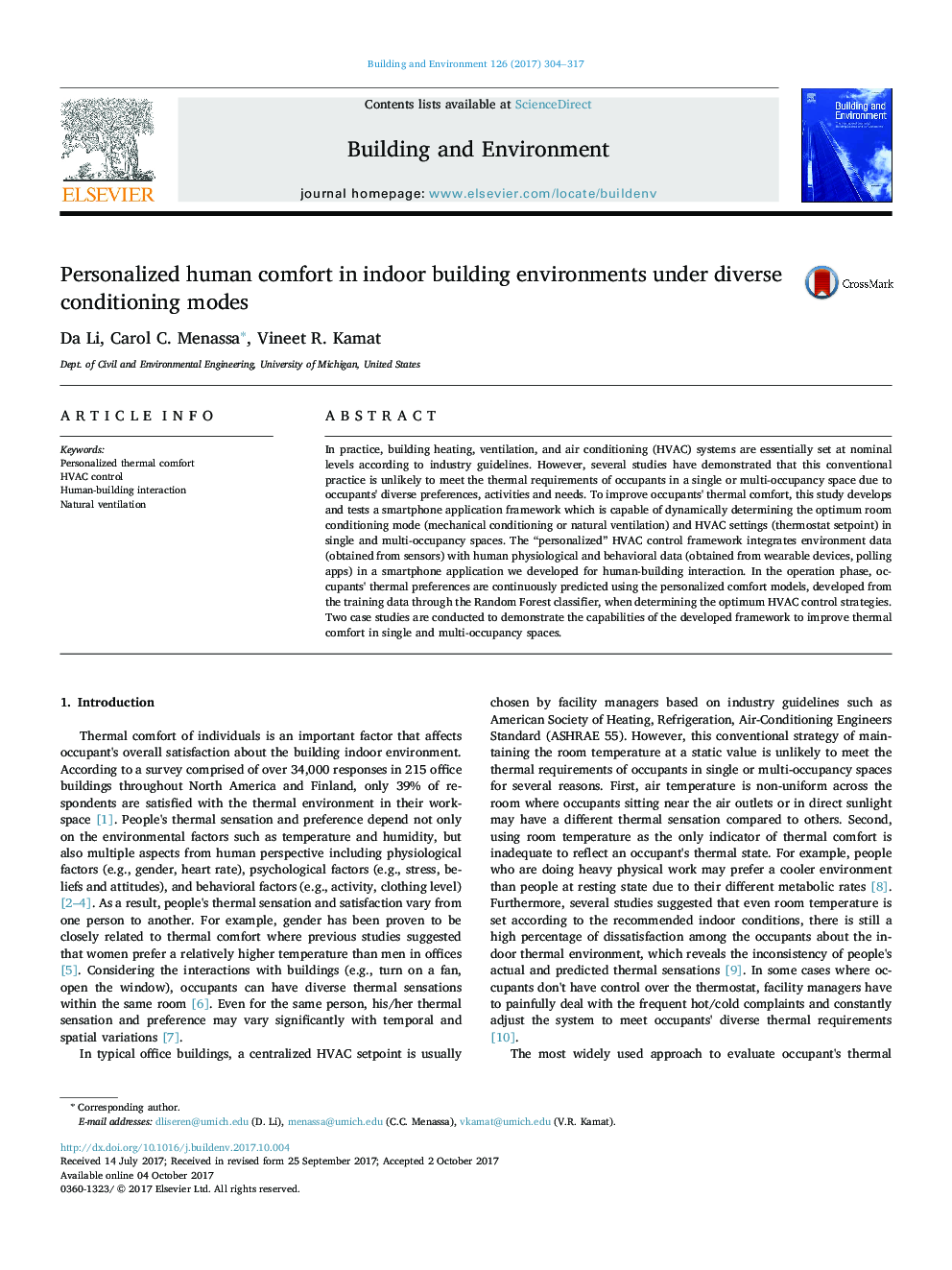| Article ID | Journal | Published Year | Pages | File Type |
|---|---|---|---|---|
| 6479195 | Building and Environment | 2017 | 14 Pages |
â¢A personalized HVAC control framework which integrates environment and human data is proposed.â¢Human physiological and behavioral data can significantly improve the accuracy of predicting thermal preferences.â¢Occupants' diverse thermal preferences should be considered in the HVAC control strategy.â¢Optimum room conditioning mode and setpoint can be determined by evaluating the identified human and environment factors.
In practice, building heating, ventilation, and air conditioning (HVAC) systems are essentially set at nominal levels according to industry guidelines. However, several studies have demonstrated that this conventional practice is unlikely to meet the thermal requirements of occupants in a single or multi-occupancy space due to occupants' diverse preferences, activities and needs. To improve occupants' thermal comfort, this study develops and tests a smartphone application framework which is capable of dynamically determining the optimum room conditioning mode (mechanical conditioning or natural ventilation) and HVAC settings (thermostat setpoint) in single and multi-occupancy spaces. The “personalized” HVAC control framework integrates environment data (obtained from sensors) with human physiological and behavioral data (obtained from wearable devices, polling apps) in a smartphone application we developed for human-building interaction. In the operation phase, occupants' thermal preferences are continuously predicted using the personalized comfort models, developed from the training data through the Random Forest classifier, when determining the optimum HVAC control strategies. Two case studies are conducted to demonstrate the capabilities of the developed framework to improve thermal comfort in single and multi-occupancy spaces.
